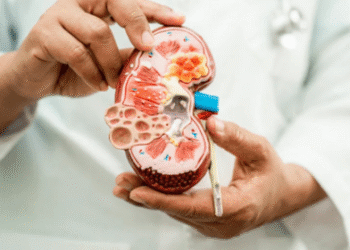Kidney stones are a common and painful urological condition that affect millions of people worldwide. These hard mineral and salt deposits form inside the kidneys and can vary in size from tiny grains to larger stones that cause intense pain and complications. If you’re experiencing symptoms such as sharp lower back pain, blood in urine, or painful urination, you might be dealing with kidney stones. Fortunately, modern kidney stone treatment methods offer effective relief and help prevent recurrence.
What Are Kidney Stones?
Kidney stones, medically known as renal calculi, form when the concentration of certain substances in the urine — such as calcium, oxalate, and uric acid — becomes too high. This imbalance can cause crystals to form, which over time can grow into stones. These stones can travel from the kidney into the ureter (the tube connecting the kidney to the bladder), where they may cause blockages and pain.
Common Symptoms
- Severe pain in the back or side
- Pain during urination
- Pink, red, or brown urine (blood in urine)
- Nausea and vomiting
- Frequent urge to urinate
- Fever and chills (if infection is present)
Diagnosis of Kidney Stones
If a kidney stone is suspected, a urologist may order a combination of tests including:
- Urinalysis – to detect crystals, blood, or infection
- Imaging tests – such as CT scans, X-rays, or ultrasounds to visualize the stone
- Blood tests – to check for substances that might be forming the stones
Types of Kidney Stone Treatment
Depending on the size and type of kidney stone, as well as the severity of symptoms, treatment options vary. Below are the most common approaches:
1. Hydration and Pain Management
For smaller stones (less than 5 mm), drinking plenty of water (2-3 liters per day) may help flush the stone out naturally. Over-the-counter or prescription pain relievers such as ibuprofen can help manage discomfort.
2. Medical Expulsive Therapy
Medications such as alpha-blockers (e.g., tamsulosin) can relax the muscles in the ureter, making it easier for stones to pass. This method is often recommended for stones between 5 mm and 10 mm.
3. Shock Wave Lithotripsy (SWL)
SWL uses high-energy sound waves to break the stone into smaller pieces that can pass more easily through the urinary tract. It is a non-invasive procedure with a high success rate for medium-sized stones.
4. Ureteroscopy
In this minimally invasive procedure, a small scope is passed through the urethra and bladder into the ureter. The doctor can locate and remove or break the stone using a laser. Ureteroscopy is ideal for stones lodged in the lower urinary tract.
5. Percutaneous Nephrolithotomy (PCNL)
For large or complex stones, PCNL may be necessary. A small incision is made in the back to allow a nephroscope to enter the kidney and remove the stone. This is a more invasive procedure but highly effective for large stone burdens.
Preventing Recurrence
After treating the current stone, preventing future occurrences is essential. Doctors usually recommend:
- Staying well-hydrated
- Limiting salt and animal protein intake
- Avoiding foods high in oxalate like spinach, beets, and nuts
- Taking prescribed medications to manage calcium or uric acid levels
- Regular follow-ups and urine testing
When to See a Doctor
You should consult a doctor if you have severe pain that won’t go away, blood in your urine, fever, or vomiting. These may indicate that the stone is causing a blockage or infection that requires immediate medical attention.
Final Thoughts
Kidney stones can cause significant discomfort, but with timely diagnosis and appropriate stone removal techniques, patients can achieve full recovery and reduce the risk of recurrence. From lifestyle changes to advanced surgical options, there are solutions tailored to each individual’s needs. If you or a loved one is struggling with symptoms, consult a urologist to explore the best kidney stone treatment available today.













